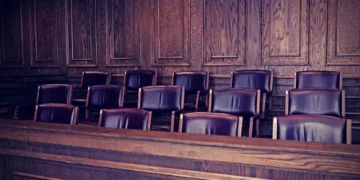Nov 21, 2024 Story by: Editor
In 2021, New York State initiated a project to address racial disparities in its juvenile justice system, specifically targeting the disproportionate criminalization of Black youth. Five counties each received $50,000 to develop plans aimed at diverting more young individuals with low-level charges away from court proceedings and into supportive services. While the initiative is ongoing and full outcomes are still awaited, preliminary results highlight its potential.
Schenectady County, located north of Albany, adopted a novel decision-making framework that increased the proportion of Black youth diverted from the juvenile justice system by 13%. This change involved collaborative evaluations by probation officers, social workers, behavioral health specialists, and youth service agency staff. Together, they reviewed cases, considering the challenges faced by the youth and exploring alternative interventions. The process included input from the youth themselves. Additionally, identifying details, such as race, were removed from case files to minimize implicit bias.
Officials in Schenectady County and national justice experts believe these measures demonstrate that systemic discrimination can be tackled. “The success here came because county leadership was invested, the probation department was invested, and community partners were invested,” said Arthur Butler of the county’s Human Rights Commission.
Reforms to juvenile justice across the United States have been influenced by neuroscience research, which recognizes the developmental vulnerabilities of teenagers, including impulsivity and risk-taking behaviors. Studies reveal that youth diverted to supportive programs have better outcomes compared to those incarcerated. According to the federal Office of Juvenile Justice and Delinquency Prevention, detention increases the likelihood of re-arrest upon release, while diversion improves educational and economic prospects. “Diverting kids out of court has much better outcomes,” stated Richard Mendel, senior research fellow for The Sentencing Project.
During a webinar by The Sentencing Project, a young individual from Philadelphia named Jay shared his experience with a restorative justice program called Healing Futures. Arrested for car theft, Jay participated in the program, where he apologized to the car owner and received forgiveness. This experience led to significant personal growth, improving his academic performance and enabling him to secure employment. Reflecting on the program, Jay said, “It made me less self-absorbed — like, other people matter.”
In New York, youth charged with severe crimes such as murder or sexual assault are prosecuted, while those accused of lesser offenses, such as trespassing, are referred to county probation departments. Probation officers then decide whether to divert the youth to supportive services or pursue prosecution. However, Black youth are diverted less frequently than their white counterparts. A 2022 report by the state’s Division of Criminal Justice Services revealed that Black youth cases were diverted 42% less often. Across counties, diversion rates vary significantly, with some counties reporting stark disparities.
The Policy Equity Academy program in New York seeks to address these gaps by tailoring interventions to each county. Schenectady County, for instance, trained its teams on issues like implicit bias and racial disparities before crafting a local action plan. Collaborative weekly meetings, involving diverse stakeholders from social services, behavioral health, and community organizations, have become central to decision-making. Probation supervisor Justin Pinn described these sessions as “a big brainstorm — a group approach.” He emphasized the importance of consensus and shared decision-making in addressing youth needs effectively.
Youth are also involved in shaping their diversion plans, which enhances compliance and long-term success. “Instead of us telling them what they’re going to do, we say, ‘Hey, what can you agree to?’” said Butler. This participatory approach has contributed to a rise in Black youth diversion rates, from 35% in 2019 to 48% in 2023.
Despite these advancements, overall diversion rates in Schenectady County have declined. More serious crimes and fewer minor arrests have reduced the pool of cases eligible for diversion. The proportion of diverted white youth has also decreased, reflecting shifts in the types of offenses being addressed. Pinn acknowledged that these trends might persist but remains optimistic about the program’s potential impact.
Local leaders are hopeful that Schenectady’s approach will inspire similar reforms statewide. Pinn stressed that success requires a willingness to challenge existing systems and confront disparities. “In other counties, they’d have to accept it and acknowledge that they have a problem,” he concluded. Source: The Imprint

















